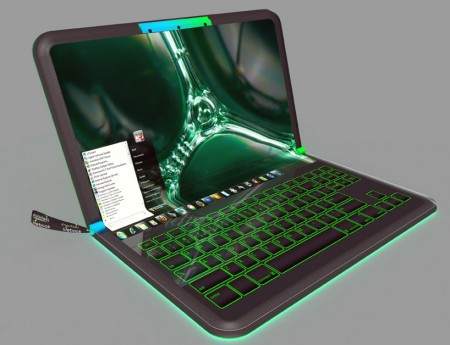American designers Laura Karnath and Carl Burdick believe that “designers can no longer design products which rely on energy and resources as if those things were limitless.”
Their new laptop computer design, which the team calls “Lifebook Leaf” appears to be their attempt to show that a radical change in thinking needs to take place in the technology marketplace.

The design employs the latest in solar cells, flexible OLED displays, and “advanced durable materials” to create a highly efficient, solar powered laptop which is “totally divorced from the infrastructures of the past.”
The new computer design, which was created for the Fujitsu design award 2011 competition in conjunction with designboom, is reportedly one of over 1000 entries and has been placed on the contest’s shortlist for potential winners.
One side of the “laptop” is designed with a single OLED display that can be laid flat to function as a large display or bent at its midpoint to mimic a conventional laptop orientation. In this orientation, one portion of the display could be used as a screen, the other as a touch-style keyboard.
The flip side of the device would be lined with solar cells that, when laid flat, would charge the device’s battery. The designers say that they hope advances in CPU technology would soon enable the laptop to generate enough excess energy to charge other devices via USB, too.
The computer would include a 4G adapter for wireless Internet access and three cameras located at the top of the screen that could capture 3-D images and facilitate a gesture interface which would enable the user to execute functions based on simple movements.
The designers also added in a smaller OLED display on the solar side of the laptop to show charging progress, 4G signal strength and any alerts or messages that come through while the device is charging.
Other interesting design features include a rubberized interior to prevent screen scratches, a polycarbonate outer shell and a zippered edge that, in conjunction with the device’s shell, would create a water-proof seal.






